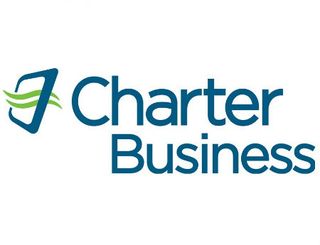Charter Business To Do The Splits

Charter Communications is in the process of separating its businesses services operations into two groups – one that will focus on small- and mid-sized businesses (SMBs), and another that will target larger, enterprise commercial customers and also utilize the operator's new "Spectrum" branding, Tom Rutledge, Charter’s president and CEO, said Thursday on the MSO’s fourth quarter earnings call.
That shares similarities with the playbook used by Cablevision Systems, Rutledge’s former company, which leans on one division to serve SMBs primarily via HFC, and another, Lightpath, to support larger enterprise customers with a fiber-based Metro Ethernet platform.
Word of Charter’s new business services set-up comes amid a generally solid fourth quarter in which the rate of business services revenues growth slowed a bit. Charter pulled in $262 million in business services revenues in the fourth quarter, a 16.1% increase versus the year ago quarter. The $253 in commercial revenues generated in the third quarter of 2014 represented a year-on-year increase of 17.7%. Rutledge attributed the difference in growth rate in part to a slowing of Charter’s cell tower backhaul business.
Looking ahead, he said Charter intends to accelerate growth in the business services segment with new product and pricing strategies, adding that the MSO will also be in position to take advantage of a more attractive footprint following pending system swaps and transactions that won't happen until after Comcast and Time Warner Cable seal up their proposed merger.
On the residential side, Rutledge also offered an update on the rollout of Charter’s new cloud-based Spectrum Guide, setting a goal to have it deployed to over half of its retained footprint, or about 1.5 million video subscribers, in 2015.
Charter hasn’t announced which markets will get it first, but it’s using technology from ActiveVideo Networks and Zodiac Interactive that will allow the MSO to offer the new UI on all two-way, interactive set-tops, regardless of age or processing power, including old DCT-2000s or its new IP-capable Worldbox. Amplifying why Charter has eschewed the use of downstream-only Digital Transport Adapters (DTAs) for its all-digital deployment, Rutledge noted that the new UI won’t run on one-way DTAs (Comcast has suggested that it’s technically possible to "force-tune" a DTA using an iPad or another mobile device that rely on an IP-based upstream connection).
Rutledge was also asked to give his read on the FCC’s decision to raise the definition of broadband to 25 Mbps down by 3 Mbps upstream, and what share of Charter’s footprint is being served by telco competitors with that level of service. According to Rutledge, U-verse’s average customer gets 6 Mbps, while Charter markets a baseline service of 60 Mbps down. Charter has a 4% overlap with Verizon FiOS.
Multichannel Newsletter
The smarter way to stay on top of the multichannel video marketplace. Sign up below.
“From a practical point of view today, we are dramatically different than they are,” Rutledge said of AT&T U-verse, later suggesting that Charter might be served by shifting its marketing strategy to: “AT&T doesn’t sell broadband,” but that the MSO has not made a decision to do that.
AT&T launched a 75 Mbps U-verse tier in some markets last year, complementing iers that deliver downstream speeds of 6 Mbps, 12 Mbps, 18 Mbps, 24 Mbps, and 45 Mbps, respectively. AT&T has also introduced 100 Mbps and 1-Gig services in select areas where it has begun to introduce its new fiber-based “GigaPower” service.
